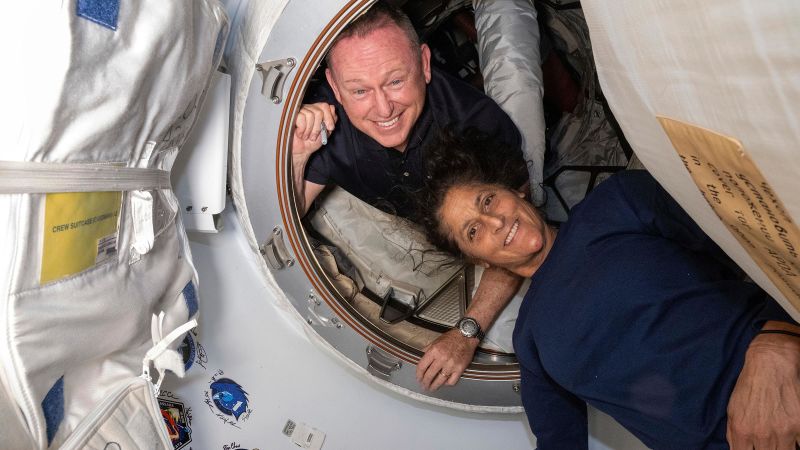NASA’s recent announcement regarding the delay of the SpaceX Crew-10 launch has significant implications for the astronauts currently aboard the International Space Station (ISS). The agency confirmed that astronauts Butch Wilmore and Suni Williams, who were originally scheduled to return from their month-long mission, will remain in low Earth orbit for an extended period. This unexpected extension in their mission is primarily due to technical challenges encountered during their time on the ISS.
Wilmore and Williams were launched into space back in June as part of the first crewed test flight of Boeing’s Starliner spacecraft. The expedition was anticipated to last about one week, but complications arose with their spacecraft, rendering it unsafe to return to Earth as planned. As a result, NASA made the decision to prolong their stay in space, integrating them into Crew-9, which is a standard ISS mission. This crew is initially expected to remain in orbit until no sooner than February, thereby leading to an extended duration of six months or potentially longer for Wilmore and Williams.
The Crew-10 launch was initially set for an earlier timeframe; however, NASA determined that it would be necessary to conduct additional processing on a new Dragon spacecraft specific to this mission before proceeding. In a blog post, NASA indicated that both the agency and SpaceX examined various options for managing the crew handover. Ultimately, the conclusion was reached that a late March launch for Crew-10 would fulfill NASA’s operational requirements while aligning with broader objectives for the ISS in 2025.
The Crew-10 mission delay—for at least a month—highlights the complexities involved in facilitating crew transfers and ensuring the reliability of the vehicles used for such missions. The new launch timeline grants NASA and SpaceX the necessary time to prepare the new Dragon spacecraft adequately, which is essential for safely transporting astronauts. Both agencies recognize the importance of delivering a safe experience for space travelers, especially when managing the crew assignments from the ISS.
Amid these developments, Crew-9 includes notable astronauts, such as NASA’s Nick Hague and Russian cosmonaut Aleksandr Gorbunov. This diverse international crew brings together unique perspectives and expertise to the operations aboard the ISS. Since their arrival at the station in September, their ongoing collaboration with Wilmore and Williams has been pivotal in effectively conducting research and other programmatic activities in space.
It’s worth noting that missions to the ISS are generally planned for around six months. However, there are circumstances where astronauts may find their assignments extended due to unforeseen technical or logistical challenges. The situation experienced by the current crew mirrors past incidents where astronauts have had to adapt to new timelines and responsibilities.
For instance, NASA astronaut Frank Rubio recently set a US record by spending 371 consecutive days aboard the ISS, which was a mission that concluded earlier in 2023. Such extensions can arise for a myriad of reasons, yet they also serve as a testament to the resilience and adaptability of astronauts, who must continuously navigate the demands of operating in a unique and challenging environment.
As technologies evolve and space exploration continues to expand, understanding the dynamics of crewed missions becomes increasingly important. Each launch presents new opportunities and obstacles, ultimately contributing to NASA’s success in partnering with private companies like SpaceX to push the boundaries of human exploration and scientific discovery. The delay of Crew-10 is a reminder of the complexities involved in modern space missions but also showcases the more extensive cooperative efforts that enhance the capabilities of the ISS and beyond.



